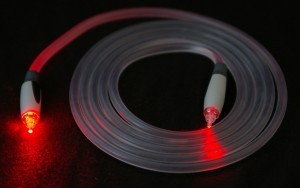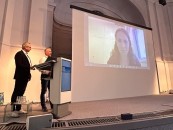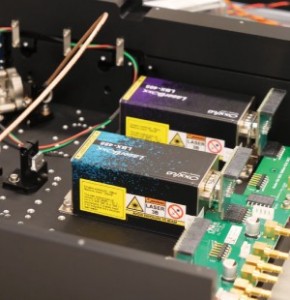
The "Fiber Optic Sensors Global Market Forecast & Analysis 2023-2033" report has been added to ResearchAndMarkets.com's offering.
The 2023-2033 Fiber Optic Sensors quantitative market review and forecast data, presented in this study report, are segmented into the following geographic regions, plus a Global summary:
-
The Americas (North America, Central and South America)
-
EMEA (Europe, Middle Eastern countries, plus Africa)
-
APAC (Asia Pacific)
The market forecast data is presented and segmented in two main sections:
-
Fiber Optic Point (Local) Sensor: Complete Unit
-
Distributed Fiber Optic Sensor (Continuous and Quasi-continuous): System Channel Line
Fiber Optic Point Sensor: Sensing/Measuring Quantity :
The Point Sensor Forecast further segmented by the following sensing/measuring quantity (measurand) types:
-
Mechanical Strain
-
Temperature
-
Pressure
-
Chemical, Gas, Liquid
-
Vibration, Acoustic, Seismic
-
Displacement, Acceleration, Proximity
-
Electric, Current and Magnetic Field - Fiber Optic Sensors
Fiber Optic Point Sensors: Applications
The market forecast of the Fiber Optic Point Sensors is segmented by the following end-user applications:
-
Manufacturing Process/Factory
-
Civil Engineering/Construction
-
Military/Aerospace/Security
-
Test & Measurement used in Telecommunication, CATV, Enterprise
-
Biomedical/Science
-
Petrochemical/Energy/Utilities/Natural Resources
-
Automotive/Vehicle
Distributed Fiber Optic Sensor System Links (Lines)
In this study, the Distributed Fiber Optic Sensor function in systems is counted by individual channel link (or line), which include several components (optoelectronic transmitter/receiver, connectors, optical fiber, cable (fiber jacket), other passive components, and immediate enclosures; the quasi-continuous system also includes the FBG sensor elements, which are embedded into the sensing fiber (software is not included).
Types of Distributed Fiber Optic System Channel Lines:
Continuous Distributed sensing (optical fiber line used in a system) provides continuous, real-time measurements along the entire length of a fiber optic cable; continuous distributed sensing does not rely upon manufactured sensors but utilizes the optical fiber.
Quasi-Continuous Distributed sensing (optical fiber line used in a system) utilizes Fiber Bragg Gratings (FBGs), which have been employed as sensing elements where dense (closely spaced) sensing points are required, and the FBGs are multiplexed with various methods.
Distributed Fiber Optic Sensor Systems typically have several channel links (fiber lines).
The values shown in this study report are obtained by multiplying an (one) individual completed channel, which includes one fiber optic line (or link) and associated components for that one line (optoelectronic transmitter/receiver, connectors, optical fiber, cable (fiber jacket), other passive components, and immediate enclosures; and with Grading-Based systems, sensing elements (FBGs) are included in the list of components for each individual channel.
Therefore, the quantities (volume) and average selling prices are represented for the one system channel link (also known as a line or string). Not all systems are filled to channel capacity; therefore, customers add more channel lines or replace old lines with new lines as required over months or over years ("grow as you go").




































 Back to News
Back to News




























